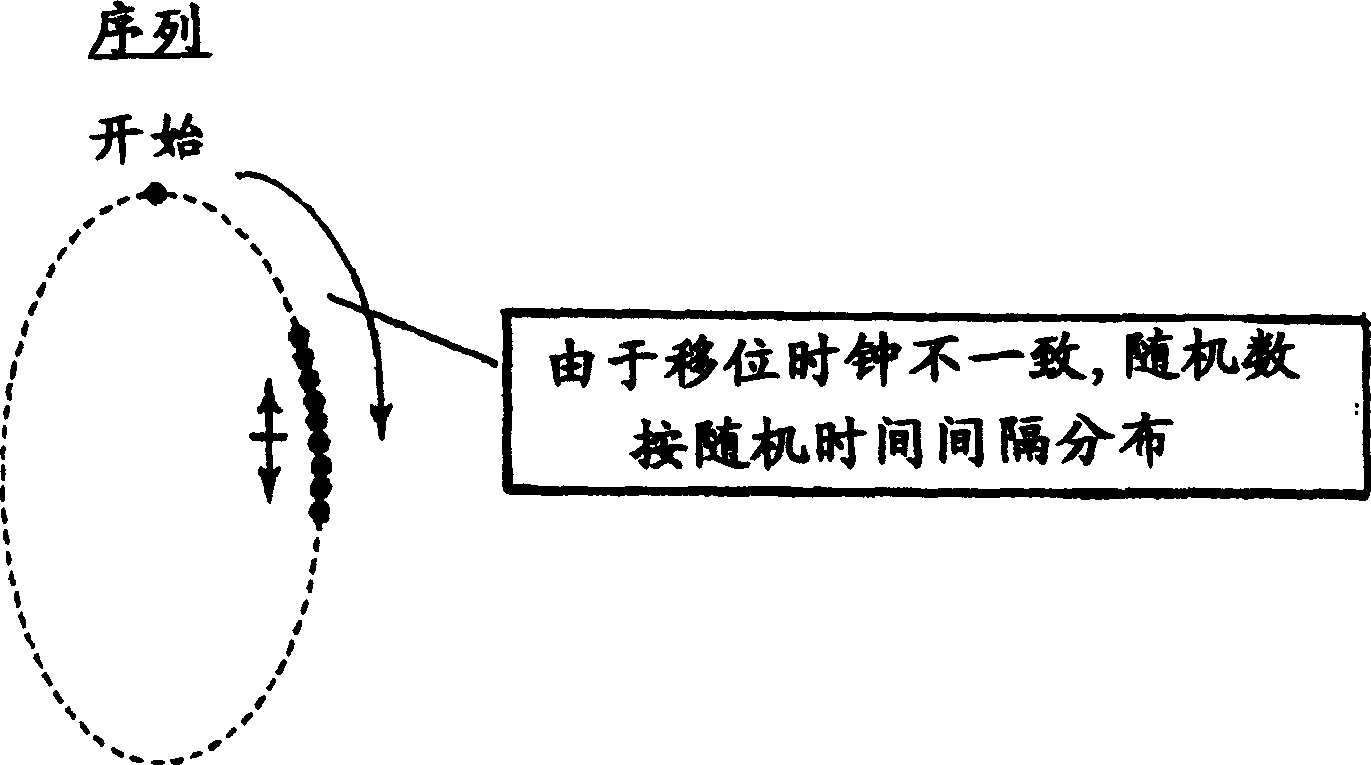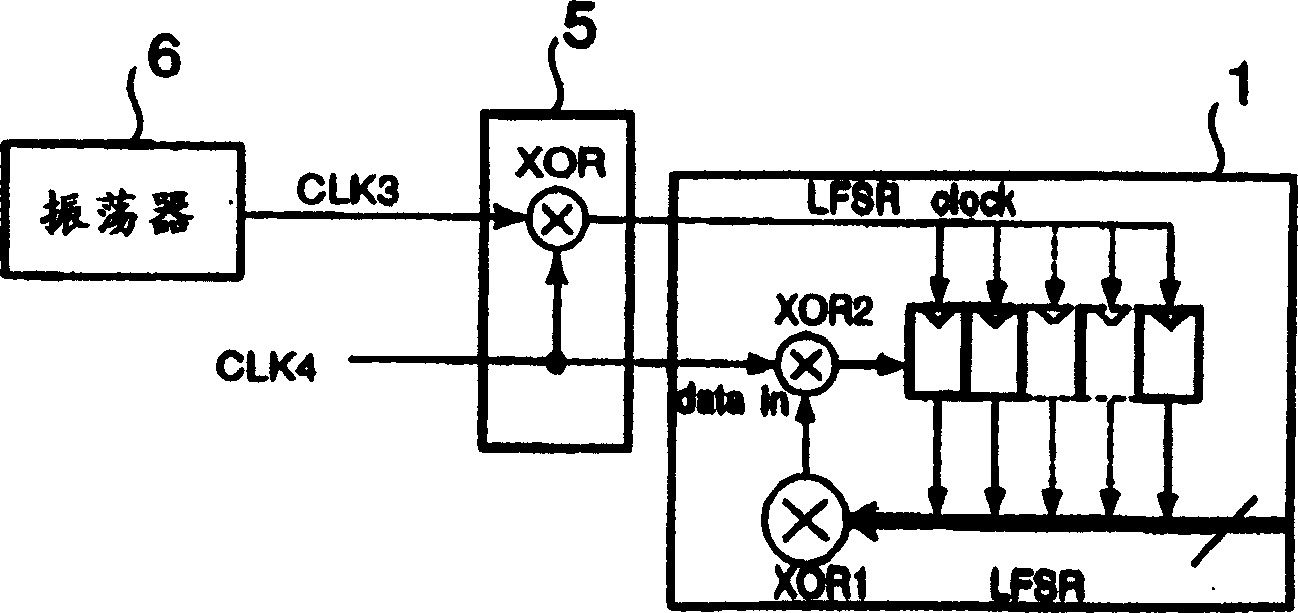Pseudo-random number generator
A pseudo-random number and generator technology, applied in random number generators, instruments, electrical digital data processing, etc., can solve the problems of not being able to provide randomness, pseudo-random number sequence or pseudo-random number generation logic identification being vulnerable
- Summary
- Abstract
- Description
- Claims
- Application Information
AI Technical Summary
Problems solved by technology
Method used
Image
Examples
Embodiment Construction
[0026] Such as figure 2 As shown, the pseudo-random number generator according to the present invention includes: LFSR1; signal generator 2, used to generate a shift clock (LFSR clock) and predetermined input data (datain) for operating LFSR1; access controller 3, used to control reading of random numbers generated by LFSR1; and writing circuit 4 for writing data supplied from the outside into each register of LFSR1. In addition, the pseudo-random number generator according to the present invention also includes a Pre-SEED circuit 5 for generating a Pre-SEED according to which the initial value (SEED) of the LFSR 1 is defined at the reset time immediately after power-on, Such as image 3 shown.
[0027] figure 2 and 3 The structure of the pseudo-random number generator according to the invention is shown in two parts in order to explain its operation, which is described below, wherein, figure 2 shows the structures associated with normal operation, image 3 The structure...
PUM
 Login to View More
Login to View More Abstract
Description
Claims
Application Information
 Login to View More
Login to View More - R&D
- Intellectual Property
- Life Sciences
- Materials
- Tech Scout
- Unparalleled Data Quality
- Higher Quality Content
- 60% Fewer Hallucinations
Browse by: Latest US Patents, China's latest patents, Technical Efficacy Thesaurus, Application Domain, Technology Topic, Popular Technical Reports.
© 2025 PatSnap. All rights reserved.Legal|Privacy policy|Modern Slavery Act Transparency Statement|Sitemap|About US| Contact US: help@patsnap.com



